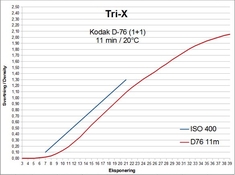You'll note that ASA speeds were determined on the basis of print results. The goal was to find the lowest exposure that would provide excellent results. This worked, and I agree with this methodology. Then, after WWII, faster films became available. The cameras of the time (mostly leaf shutters) were designed for slower films, and this forced users into using the smallest apertures, because maximum shutter speeds were not very high (1/300 was the usual top speed for most cameras of the period). When this is done, the exposure is proportionally greater than it would be with larger apertures. So, 1/50 @ f/16 is
not equivalent to 1/400 @ f/5.6 with a leaf shutter. This is because the entire aperture is uncovered for a proportionally longer time when the aperture is small. Nonetheless, the powers that be decided to double the film speeds in 1960. This would mean that an exposure of 1/100 @ f/16 under the old speed would become 1/200
@f/16 with the new higher speed. But that is the wrong approach. The correct thing to do would be to inform photographers who have leaf shutter cameras to use higher shutter speeds when they are using small apertures.
This whole thing was ironic, because right then, cheap Japanese SLRs with focal plane shutters started flooding the market, which made the change unnecessary. We are now stuck with this stupid ISO system.






 ).
).